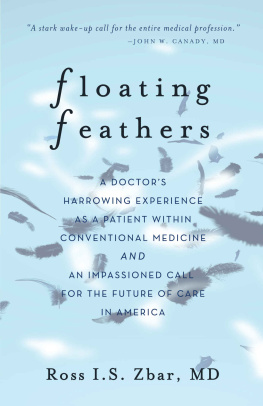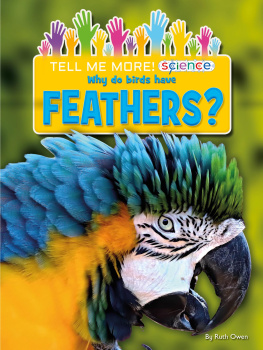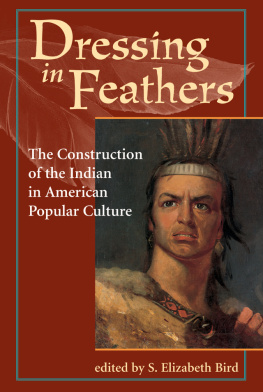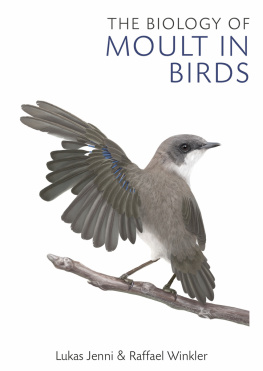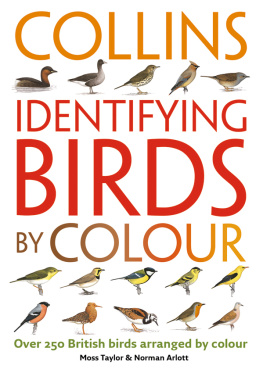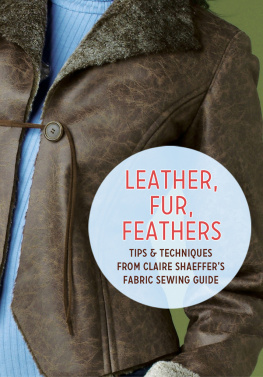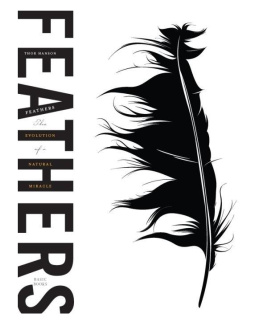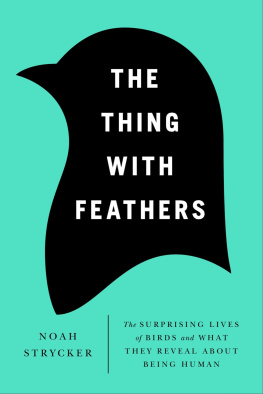
HELM
Bloomsbury Publishing Plc
50 Bedford Square, London, WC1B 3DP, UK
29 Earlsfort Terrace, Dublin 2, Ireland
This electronic edition published in 2021 by Bloomsbury Publishing Plc
BLOOMSBURY, HELM and the Helm logo are trademarks of Bloomsbury Publishing Plc
First published in the United Kingdom by Bloomsbury Publishing 2021
This edition published by arrangement with Delachaux et Niestl, Paris, France
First published in 2017 in France as Identifier les plumes des oiseaux dEurope occidentale by Delachaux et Niestl, Paris. Delachaux et Niestl, Paris, 2017
Translation Tony Williams, 2021
The author has asserted her right under the Copyright, Designs and Patents Act, 1988, to be identified as Author of this work
All rights reserved
You may not copy, distribute, transmit, reproduce or otherwise make available this publication (or any part of it) in any form, or by any means (including without limitation electronic, digital, optical, mechanical, photocopying, printing, recording or otherwise), without the prior written permission of the publisher. Any person who does any unauthorised act in relation to this publication may be liable to criminal prosecution and civil claims for damages.
A catalogue record for this book is available from the British Library
ISBN: 978-1-4729-7172-2 (HB)
ISBN: 978-1-4729-7170-8 (eBook)
ISBN: 978-1-4729-7171-5 (ePDF)
To find out more about our authors and their books please visit www.bloomsbury.com where you will find extracts, author interviews and details of forthcoming events, and to be the first to hear about latest releases and special offers, sign up for our newsletters.
Cover photographs
Upper right: Luis Castaneda/AGF foto/Biosphoto upper left: Fabrice Chanson/Biosphoto middle left and rear cover: Clo Fraigneau bottom left: Serge Hnzi/Biosphoto bottom right: Bruno Mathieu/Biosphoto.
Disclaimer
The author would like to point out that no birds were mistreated or killed in the preparation of this book. The feathers shown here come from natural moults, plucked carcasses, or birds that died in a care centre or were found dead in the wild (as a result of predation, hunting, collision, etc.). The origin of the feathers presented in the Species Description section is shown in an appendix (Table of illustration credits and origin of feathers). European regulations have listed a large number of protected species, for which destruction, mutilation, capture, taking from the natural environment, intentional disturbance, detention, transport, naturalisation, and commercial or non-commercial use of specimens are prohibited The term specimen includes all or part of individuals, including eggs. This therefore includes the possession and transport of feathers, as it cannot be proven that the bird was not disturbed, injured or killed in order to obtain them.

Contents
Please note that abbreviations are sometimes used in combination, e.g. Pi = inner primary, TP = total length of a primary, NP = number of primaries.
| Abbreviation |
| Female (used on the plates) |
| Male (used on the plates) |
| - | Inapplicable information (e.g. the feather does not occur in the species concerned) |
| Only the maximum measurement is known (z: size in cm) |
| >y | Only the minimum measurement is known (y: size in cm) |
| ad | Adult; definitive plumage (but might change according to season). Used on the plates after feather type. |
| Al | Alula |
| axil | Axillary (underwing-covert of the axilla), armpit. |
| C | Calamus proportion as a % of total feather length T, from the base to the position of the first barbs (see feather measurements p.18) |
| c | Central, used for rectrices, e.g. Rc: one or two pairs of feathers in the centre of the tail |
| cm | Centimetres |
| Em | Position of emargination, as a % of the total length of the primary feather concerned (see ) |
| f | Female (used in the tables) |
| FW | Folded wing, measured in cm (biometrics table) |
| GC | Greater coverts (of the secondaries) |
| i | Inner: towards the body or the centre of a bird (median axis) in feather descriptions (e.g. Pi or Si: primary inner, secondary inner) |
| imm | Immature (first-year for certain species): plumage not yet that of an adult; likely to change over the years. Indicated on the plates after the feather type. |
| inc | Incomplete; for bars |
| ind | An individual |
| irid | Iridescence |
| irr | Irregular |
| iv | Inner vane |
| juv | Juvenile: the first plumage, of which part may last until the following year (most often flight or tail feathers) |
| kg | kilogram |
| L | Length: size of a bird in cm () |
| LC | Lesser coverts (of the secondaries) |
| m | Median/middle (in feather descriptions, e.g. Pm, Sm or Rm: primary median, secondary median, rectrix median) |
| m | Male (used in the tables) |
| M | Mass in grams in the biometrics table. |
| mm | millimetres |
| MC | Median coverts (of the secondaries) |
| N | Number of (followed by the type of flight or tail feather), .g. NP, NS, NR (number of primaries, etc). |
| n.d. | No data: no information available on size or characteristics |
| Not | Position of the notch, as a % of the total length of the primary feather concerned (see feather measurements p.18) () |
| o | Outer: at the far end from the body or the median axis (in describing feathers, e.g. Po, So or Ro: primary outer, secondary outer, rectrix outer) |
| ov | Outer vane |
| P / Ps | Primary / Primaries. Where individual primaries are identified, these are numbered as P1, P2 etc. |
| PC | Primary coverts |
| Pmin and Pmax | Size of the shortest primary and of the longest primary |
| R / Rs | Rectrix / Rectrices: tail feathers. Where individual rectrices are identified, these are numbered R1, R2 etc. |
| Rmin and Rmax | Size of shortest rectrix and of the longest rectrix |
| s | Subterminal: for a bar or a mark (not quite at feather tip) |
| S / Ss | Secondary / Secondaries. Where individual secondaries are identified, these are numbered as S1, S2 etc. |
| scap | Scapulars |
| SC | Secondary coverts (Greater, unless indicated) |
| Smin and Smax | Size of the shortest secondary and of the longest secondary |
| sp. | Species (plural: spp.) |


